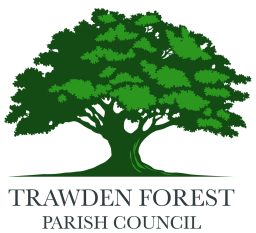Asset register
What is a Fixed Asset Register?
A Fixed Asset Register has four main purposes:
- It forms a basis for completion of box 9 in the ‘Annual Return.’
- It forms a basis for decisions on risk and insurance issues.
- It provides information on the age and potential lifespan of certain items.
- It provides assurance of the continued existence of Council’s property.
The Register is adopted by the Council at the end of each accounting year but is a working document over the following accounting year, during which Council Officers will update and amend details as necessary.
Scope of Asset Register
In order to ensure transparency and reasonableness, the following items are included in the Council’s asset register, whether purchased, gifted or otherwise acquired, together with their holding location:
- land and buildings held freehold or on long term lease in the name of the Council
- community assets
- vehicles, plant and machinery
- assets considered to be portable, attractive or of community significance
- other assets estimated or known to have a minimum purchase or resale value of £100
- long term investments, shares and loans made by the Council
The values indicated in the asset register will inform the ‘total fixed assets’ section of the Annual Return with the exception of assets held on trust.
The following items fall outside the definition for inclusion and are therefore excluded from the Council’s asset register:
- land and buildings held on short term lease or rented
- land and buildings maintained or serviced, but not owned by the Council
- assets rented by or loaned to the Council
- stock items intended for resale
- stationery and other consumable items
- boundaries of land owned (e.g. fences, hedges and gates)
- floor or land surfaces and drainage
- plants and trees
- assets with a purchase or resale value of less than £100 (other than items listed as for inclusion in the asset register)
- repairs
- cash, short term investments and other current assets
- intangible assets (e.g. trademarks, internet domain names, contingent assets, broadcast rights)
- ‘negative’ assets (e.g. provisions, borrowings, creditors and contingent liabilities)
A separate section of the asset register will contain a schedule of disposals
Valuation of assets
Once recorded on the asset register, the value of assets must not change from year to year until disposal. Concepts of depreciation and impairment adjustments are not appropriate for local councils (Governance and Accountability for Local Councils: A Practitioner’s Guide (England) 2014, para. 3.69).
Assets must be valued by one of the following means based on available information:
- ideally, apply the purchase price (net of VAT if VAT has been reclaimed);
- otherwise, apply the purchase price (gross of VAT if VAT has not been reclaimed or where the VAT status of the purchase is unclear)
Where it is not possible to trace the purchase price of the asset the insurance valuation should be applied. As a last resort, a nominal value of £1 may be applied. This should also be used for assets gifted to the Council. There is no guidance where land or buildings have been subject to substantial renovation and improvement to such an extent that the new market value bears no relation to the original purchase cost. In order to avoid renovation and improvement work being separately recorded on the asset register and in these exceptional circumstances only, a market value supplied by a qualified surveyor may be entered.
Procedure for updating the asset register
The start point is the asset register that has been agreed for the end of the previous financial year. The Council’s purchases should be reviewed for all additions required that have been made during the year. Councillors must report to the Clerk, any assets that have been gifted to the Council. Any new assets which fall in the categories stated above should be added to the asset register, with their values recorded at the purchase price (net of VAT if VAT is being reclaimed or at £1 if gifted to the Council).
The Council’s accounts should also be reviewed for all asset sales made during the year. A discussion should be held with all Council officers to identify any assets that have been lost, disposed of or gifted by the Council. Any assets which fall in the categories above should be removed from the asset register and recorded in the schedule of disposals. The asset register should record any assets loaned by the Council, including the person or organisation borrowing the asset, its location and the date when the loan period ends.
A ‘stock take’ of asset register items should occur to ensure that all asset register items can be physically verified. Any assets which cannot be located should be removed from the asset register and recorded in the schedule of disposals.

We need your consent to load the translations
We use a third-party service to translate the website content that may collect data about your activity. Please review the details in the privacy policy and accept the service to view the translations.
